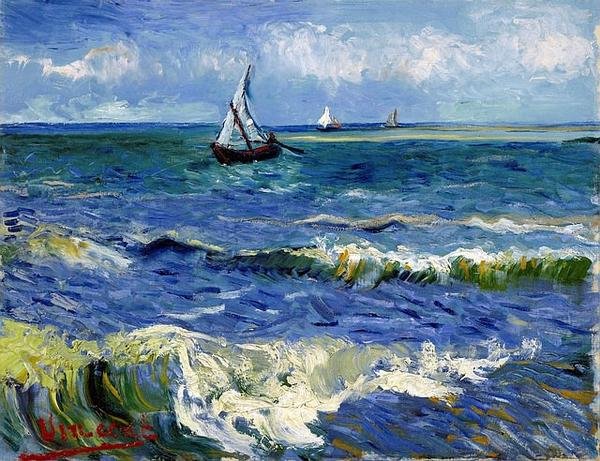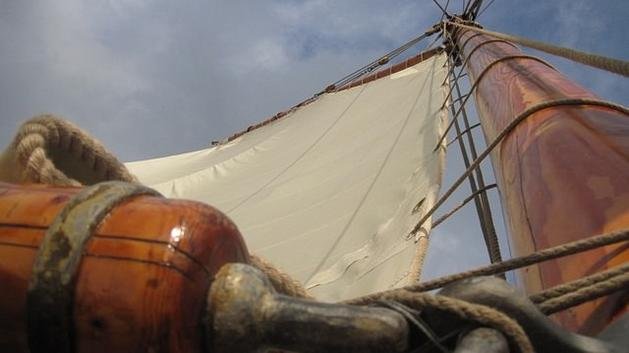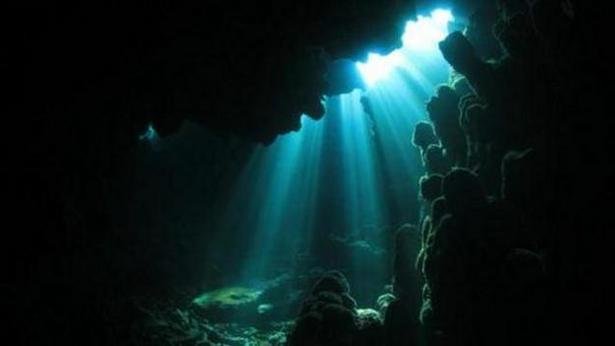ADSactly Literature: The Sea of the Opposites in Ramos Sucre’s Poetry

Readers of @ADSactly, I offer you an essay on the prose poem "A orillas del mar eterno" by the Venezuelan poet José Antonio Ramos Sucre (Cumaná, 1890-Geneva, 1930), of great relevance and about whom I have published other articles in this blog (see 1.com/poetry/@adsactly/adsactly-literature-jose-antonio-ramos-sucre-or-the-transmuted-death) and 2).

José Antonio Ramos Sucre's poetry, like all great poetry, is marked by a few central themes, which condense his existential anguish and his aesthetic ideals. One of them is death, but also perhaps the mystery of life. Another of the themes-axes of his work is eternity, in which fugacity or impermanence can be manifested as its opposite.
Ramos Sucre, influenced by ancient classical thought but also by its trajectory in the Renaissance (and later), reflects in his creation the game of opposites (what Nicolás de Cusa in the 15th century called the "coincidentia oppositorum": the coincidence of opposites). This dialectic of the opposites that coexist can be noticed in many of his poems, through diverse motives.
The sea is one of those motifs. Born in a city facing the sea, and also with treasured readings where the sea is an essential component (two obvious ones, the Odisea and the Eneida), he could not be absent from his poetic creation. The sea appears in a main or secondary way, direct or indirect, generally linked to adventures, dramas, that is to say, where actions are presented.

In the poem "On the shores of the eternal sea" (from his book The tower of Timon) that does not happen. In this poem the poetic voice presents us with almost a picture (painting, photography) in movement, where a landscape is described in which human action does not intervene (unless it is by supposition). This is the most notorious part of this poetic text. We copy it in its entirety.
The winds gallop through the stadium of the sea, bring out deep sounds from the ships, provoke sonorous palpitations in the sails, and drag the waves to a more boisterous and ephemeral life. A mountain of difficult slope casts away its vague shadow, giving the sea the darkness of an aged mirror.
The winds buzz under a zone of the air, adorned with a different immobile gull, a bird of routine and tedious life, seasoned at the heights of the masts, where the tremendous pulse of the piélago culminates. He observes the slow retreat of the sun, from which he receives a trembling halo.
The ships suffer abrupt shaking, resembling drowsy beasts and in painful rest. They are out of tune with a thick black colour in the middle of the late afternoon. Their rest predicts rapid navegations, under the impulse of the blown sails.
The air is filled with the barbaric sounds of the water, in which a deep force is declared; they compose an infinite song, hermetically concerted with other distant harmonies. Its rumour sings the shining trace of the descending sun and reconstitutes, in the gradual night darkness, the voice of the primordial abyss.

The first thing to emphasize is the preeminence of description. Metáforas generally dynamic, of movement, in contrast with others that stop or deny it, in which we find the game of the opposites, in a complex plot.
The strong winds ("galloping") over the sea -which act on the boats and their sails, and produce a fleeting movement in them- contrast with the mountain opposite it, in a blatant opposition between the mobile and the immobile. When the mountain is named, it highlights its effect of darkness on the sea and its reflection in it, using a very striking simile: "of an aged mirror". These will be, in our appreciation, the two main opposites activated in the poem: mobility/immobility, light/dark.

Strangely, in the midst of this movement, one notices the presence of an "immobile seagull", described with unusual adjectives: "bird of routine and tedious life". The existence of this bird is attached to the life of the sea and of boats; in the poem it is specified: "seasoned at the heights of the masts", a very suggestive image because of what it can mean as an impulse towards the top (in a correlate of the human being). In addition, it is the element that places us in the time of the poem: the sunset, moment in which the seagull is crowned ("tremulous aureole") by the light of the sunset.
The immobility of the mountain is matched by the immobility of the ships ("resembling drowsy beasts in painful rest"), the object of the effects of the winds on the sea. The way in which the poetic voice compares the boats with a heavy and drowsy animality is very striking. Just as it announces the possibility of a totally different life that would be prepared in that circumstance: "His rest foretells rapid navigations" (Again the human correlate?).

The atmosphere is full of the elements in play, and the water (of the sea) reappears; its repercussion is adjectivized similarly to that of the wind in the ships ("deep sones of the ships", "barbaric sones of the water"). The sounds of the wind and the sea are conjugated, and so we are given the possible revelation of the poem: the sounds "compose an infinite canticle". The descending day; the darkness occupying the space, and in those circumstances, the essential identity: the fused sound of wind and sea "sings the shining trace of the descending sun and reconstitutes, in the gradual night darkness, the voice of the primordial abyss".
The vision of eternity, proposed through a motif of great presence: the sea, is expressed as mobility (the sea extends and alters) and immobility (the sea does not change); the perfect companions are the illumination of the visible and the darkness, which contain the transcendent. Ramos Sucre, by means of the perspective he speaks to us in his poem, returns to the image, so rooted in romance and symbolism (currents of unavoidable influences on the author), of the night, which redoubles the significant ambivalence of his creation. Thus, between the darkness of the sea and the night, we converge on eternity.
The final image of the poem, of undoubted mythical charge, will continue to resonate in us: "the voice of the primordial abyss". From our interpretation, this image contains, in a portentous and enigmatic way, the ramosucreano sense: the unfathomable, which seems to be what constitutes us.

Bibliographic reference
Ramos Sucre, José Antonio (1980). Complete work. Venezuela: Ayacucho Library.
https://en.wikipedia.org/wiki/Nicholas_of_Cusa
Written by @josemalavem
Click the coin below to join our Discord Server
)
As always, a very thorough and at the same time didactic approach to a complex mind in a complex literary genre.
I think that this passage summarizes the complexities of the subject matter from Ramos Sucre's perspective.
Living by the sea one cannot help feeling humbled, intrigued, attracted, and at the same time intimidated by the majesty of it.
Its power and expanse makes us feel insignificant, and yet humans have managed to somehow "conquer" the seas, traverse them, and in some cases invade their domains as a way of challenging its transcendence.
Like seas, humans come and go. Who knows which one will prevail.
Always grateful for your reading and comments, which I appreciate very much, @hlezama. The fragment you highlight is certainly one of the central ones. The dialectic of the opposites is fundamental in the deep vision of things, and Ramos Sucre knew it.
In front of the sea I believe that we will always be before the mystery, beyond the fact that man has managed to "conquer" it in part. When we know that it is the original matter, this consciousness is accentuated.
Hi, @adsactly!
You just got a 0.28% upvote from SteemPlus!
To get higher upvotes, earn more SteemPlus Points (SPP). On your Steemit wallet, check your SPP balance and click on "How to earn SPP?" to find out all the ways to earn.
If you're not using SteemPlus yet, please check our last posts in here to see the many ways in which SteemPlus can improve your Steem experience on Steemit and Busy.
Complete and interesting work, @josemalavem. Undoubtedly, the descriptive tone of the prose poem is one of the most outstanding elements. Also the opposition of some elements, as you have pointed out. I would dare to visualize Ramos Sucre as that immobile seagull, of routine and tedious life in the sea, that receives the halo of light. I also feel a battle in which the most savage and deafening spirits fight to the end. Greetings!
Very grateful for your always sharp comments, @nancybriti. I think associating Ramos Sucre with the seagull that appears in the poem is a very interesting interpretative contribution. Greetings.